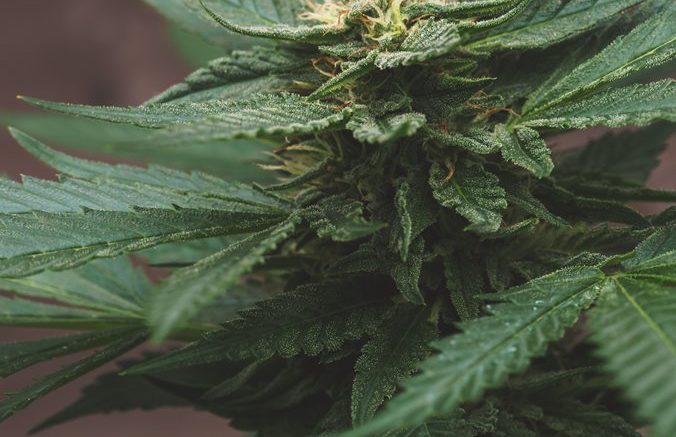Cannabis is the latest, greatest health craze, with many people flocking to cannabis products for natural, safe effects and treatments. Indeed, the research indicates that cannabis does have an impact on various health conditions — but knowing which health conditions are affected by which compounds can make the difference between relief and continued suffering.
There are two types of compounds within cannabis that can affect the human body: cannabinoids and terpenes. Learn more about these categories and the individual compounds in cannabis by reading on.
Cannabinoids
Cannabinoids are compounds that are found only in the cannabis plant, nowhere else in nature. Some cannabinoids are responsible for the unique reaction marijuana inspires when used — the relaxation, the heightened senses, the euphoria, etc. Other cannabinoids aren’t well understood as yet, but researchers are working to better understand these compounds to provide greater insight to cannabis users.
While there are more than 100 cannabinoids isolated, only a handful seem to have any effect on the human body. These include:
Tetrahydrocannabinol (THC)
Tetrahydrocannabinol (THC) is the compound most responsible for cannabis’s psychoactive effects. THC binds to receptors within the brain and digestive system to elicit responses. It is the most plentiful cannabinoid in most cannabis varieties, but there are some varieties bred to have exceedingly low levels of THC.
Cannabidiol (CBD)
The second-most plentiful cannabinoid, cannabidiol (CBD) is not psychoactive but does cause some bodily responses. Most researchers believe that CBD encourages the body to produce more of certain neurotransmitters, which facilitate various types of healing. In most places, CBD products are available legally over-the-counter.
Cannabinol (CBN)
Cannabinol (CBN) develops as THC degrades in the presence of oxygen. CBN is slightly psychoactive but not incredibly so, which is why older marijuana tends to be less potent than fresher weed. There is some evidence that CBN functions as a sedative and that it alleviates inflammation.
Cannabigerol (CBG)
Though present only in very small quantities, cannabigerol (CBG) has become one of the most interesting cannabinoids amongst researchers. The compound seems to function as a wonder treatment for a variety of hard-to-manage conditions, to include Crohn’s, irritable bowel syndrome, glaucoma and even tumor growth.
Cannabichromene (CBC)
Cannabichromene (CBC) is not psychoactive, but it does bind to receptors within the nervous system. Researchers believe that this interrupts pain signals and encourages healing and wellbeing. CBC could be valuable as a treatment for any condition that causes pain, but more study is warranted to better understand its effects.
Tetrahydrocannabivarin (THCV)
Similar to THC in structure and effects, tetrahydrocannabivarin (THCV) is another psychoactive cannabinoid — but it is not present in all cannabis varieties. Most plentiful in African sativas, THCV boasts a wealth of effects, such as suppressing appetite, regulating blood sugar and promoting bone growth.
By no means are these the only cannabinoids, and they might not be the only cannabinoids that affect the human body. Those interested in taking advantage of certain cannabinoids should talk to budtenders at a trustworthy Washington, D.C. dispensary — or a pot shop closer to home — to better understand cannabinoid profile in available products and strains. Local delivery businesses keep popping up to make experience even easier.
Terpenes
While cannabinoids are by far the most impactful compounds within cannabis, they aren’t the only ones. Terpenes are a large class of organic compounds best known for their aromatic qualities. Terpenes aren’t just present in cannabis; many plants and some insects contain terpenes. Some of the most common smells, like lavender, pine, clove and citrus, exist thanks to specific terpenes, like linalool, pinene, eugenol and limonene. When wine connoisseurs identify the aromas in different vintages, they are trying to pick out specific terpenes.
As with cannabinoids, research on terpenes is in its earliest stages — but there are strong indications that terpenes can directly affect human health. For instance, one study has identified that terpenes can be anti-inflammatory, anti-tumorigenic and neuroprotective. It is likely that terpenes work alongside cannabinoids to inspire positive effects.
Different varieties of cannabis have different types of terpenes, which is likely why different strains of marijuana provide different psychoactive experiences. For example, one of the most popular strains, OG Kush, is caryophyllene dominant with some linalool, limonene, myrcene and humulene. In contrast, Dutch Treat is dominated by terpinolene, with only trace amounts of ocimene and myrcene. Considering that terpenes can have such an impact on cannabis’s effects, it is important that users find strains with terpenes that suit their preferences.
Currently, cannabis may seem like a cure-all — and to many, that indicates that the drug isn’t good at curing anything. However, research shows that compounds in cannabis do have positive effects on the human body, and with time and greater understanding, these compounds could become incredibly useful treatments to various health conditions.
